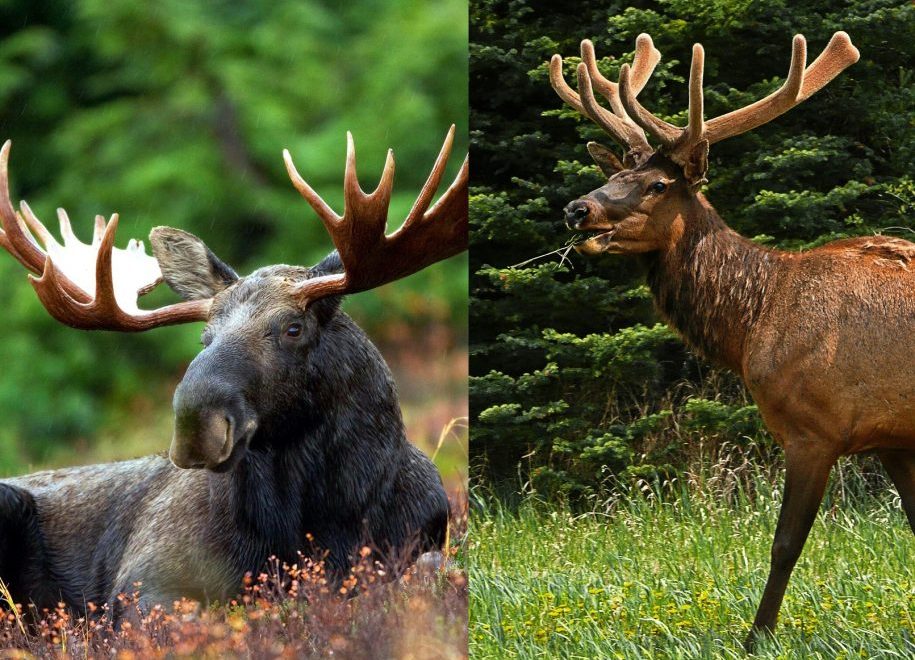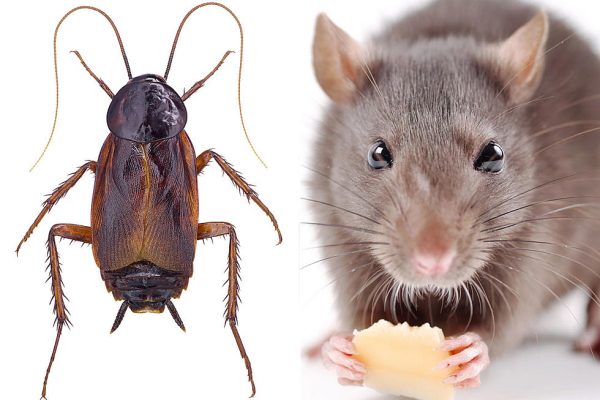Moose and elk are majestic members of the deer family. There are some similarities between them, but there are also distinct characteristics that distinguish them. The purpose of this article is to explore the differences between elk and moose, including their physical attributes and reproduction.
Physical Characteristics of Elk and Moose
Size and Weight
The elk and moose share the title of largest species in the deer family, but the moose is more than twice the size of the elk. When fully grown, moose can reach heights of up to 6.5 feet at their shoulders, whereas elk are slightly shorter, usually measuring between 4.5 and 5 feet.
The average weight of a moose is between 800 and 1,600 pounds, while the average weight of an elk is between 500 and 1,000 pounds.
Antlers
Antlers are one of the most noticeable differences between elk and moose. It’s not unusual for male elk, known as bulls, to have antlers up to 5 feet wide with multiple branches. Each year the antlers of these animals are shed and a new set is grown.
Moose bulls, however, possess massive palmate antlers that can span up to 6 feet in width. The antlers of Moose are shed every year and regrown.
Body Shape and Coloration
There is a distinct difference in the body shape and coloration of elks and mooses. A light brown to tan coat covers the body of an elk, which has a slender shape. A buff-colored patch covers their rump and their shoulders have a noticeable hump.
Dark brown coats cover the body of moose, on the other hand, which is bulkier and has a bulkier appearance. With their long legs and prominent shoulders, they are well-adapted to traversing deep snow.
Reproduction and Life Cycle


Elk Reproduction
A dominant bull mates with several cows in a polygynous mating system. As part of the rut, bulls defend their harems fiercely during the fall, when harems are established. Calves are usually born in early summer or spring after the gestation period for elk is approximately 8 months. Growing up, calves gain independence from their mothers as they become more independent.
Moose Reproduction
Bulls are polygynous, but cows are receptive to dominant bulls during rutting season. A moose’s breeding season also begins in the fall.
Spring is the time for moose calves to be born after a gestation period of around eight months. The early months of a moose’s life are particularly vulnerable, and its mother is its most important protector and caretaker.
Differences in Hunting and Conservation Practices
Elk Hunting and Management
The hunting of elk is regulated in many regions in order to ensure the sustainability of populations. The regulation of hunting seasons and quotas is necessary for maintaining the health and balance of the elk population.
To implement hunting regulations that take population size, reproduction rates, and habitat capacity into account, conservation organizations and wildlife management agencies collaborate. By adopting such an approach, overharvesting can be prevented and elk species can be conserved for a long time to come.
Moose Hunting and Management
Moose hunting is regulated just like elk hunting to prevent overexploitation. A careful assessment of scientific data and population assessments is used to determine hunting seasons and quotas.
Conservation of habitat as well as monitoring of diseases and parasites may also be part of moose management strategies. The management of moose populations for future generations depends on using sustainable hunting practices and conserving suitable habitats.
Similarities and Differences between Elk and Moose
Similarities
There are some similarities between elks and moose despite their distinct characteristics. There is a similarity between the two species in that both are herbivores and belong to the deer family. As prey for predators, they play an essential role in their ecosystems by influencing vegetation dynamics.
Moose and elk also have seasonal behaviors, like the rut, in which males compete for mating opportunities. The two animals also exhibit impressive physical attributes and have adapted to specific habitats.
Differences
Moose are larger and heavier than elk, and they differ significantly in size. The antler structure of elk and moose also differs, with elk having multibranched antlers, whereas moose have wide palmate antlers.
Moose and elk possess different body shapes and colors, with moose having a bulkier frame and a dark brown coat, while elk have a slender build and tan coats. They also differ in their feeding habits, with elk being more adaptable in their diet compared to moose, who prefer aquatic vegetation.
Conclusion
Moose and elk are fascinating animals that captivate us with their imposing size, antler displays, and unique adaptations. The deer family shares many similarities, but it also exhibits distinct characteristics that make them stand out.
The complexity and diversity of the natural world can be appreciated when we understand their differences. Both elk and moose populations can thrive for generations to come if we prioritize conservation efforts, sustainable hunting practices, and habitat preservation.





